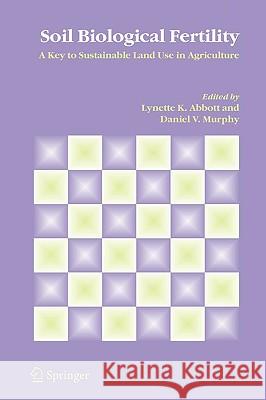Soil Biological Fertility: A Key to Sustainable Land Use in Agriculture » książka
Soil Biological Fertility: A Key to Sustainable Land Use in Agriculture
ISBN-13: 9781402066184 / Angielski / Miękka / 2007 / 264 str.
Soil Biological Fertility: A Key to Sustainable Land Use in Agriculture
ISBN-13: 9781402066184 / Angielski / Miękka / 2007 / 264 str.
(netto: 384,26 VAT: 5%)
Najniższa cena z 30 dni: 385,52 zł
ok. 22 dni roboczych
Bez gwarancji dostawy przed świętami
Darmowa dostawa!
This book presents a comprehensive scientific overview of the components and processes that underpin the biological characteristics of soil fertility. It demonstrates the interdependence of soil biological fertility with physical and chemical characteristics of soil. The book highlights the enormous diversity of life in soil and the resulting effects that management of land can have on the contribution of this diverse community to soil fertility in an agricultural context. It is becoming more relevant to explore soil biological processes in terms of their contribution to soil fertility. However, dilemmas do arise. Some agricultural chemicals may either overshadow or enhance biological contributions to soil fertility. The challenge is to select land management practices that improve the capacity of biological processes to contribute to soil physical and chemical fertility while increasing the sustainability of farming systems for particular soils and climates. Case studies of sustainable farming systems in relation to soil biological fertility are discussed and a global perspective is given about sustainability of soil management in relation to international agreements and environmental issues. This book is aimed at agricultural and environmental research scientists, agricultural extension officers and university students in a range of disciplines, including soil science (and subdisciplines of soil biology, root pathology, root symbioses, soil chemistry and soil physics), plant science, agronomy, animal science, land management and environmental science, who wish to gain an overview of the biological processes that contribute to soil fertility and have the potential to influence the production of food for humans and animals. It would also be of interest to leading farmers who are interested in understanding soil processes in their production systems. Soil biological fertility is often ignored but its central importance to sustainable use of land in agriculture makes it relevant to scientists and students in all disciplines related to agricultural production and environmental land management.











